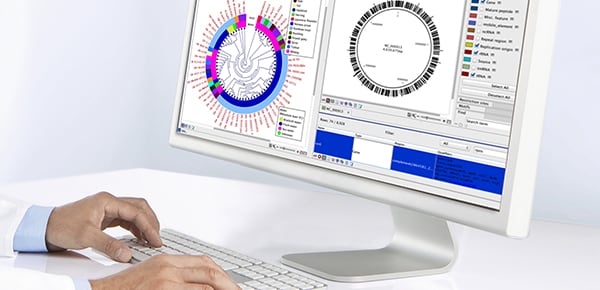


















Many great papers citing CLC Genomics Workbench have come out just in the last few months. To give you an overview of how our software can be used in different types of research, we've selected a handful of papers to be presented here.
Illumina Synthetic Long Read Sequencing Allows Recovery of Missing Sequences even in the “Finished” C. elegans Genome
First author: Runsheng Li
This Nature Scientific Reports paper from scientists at Hong Kong Baptist University and Illumina describes an effort to analyze the C. elegans genome using synthetic long reads, recovering some missing sequence with the new assembly. Researchers used CLC Genomics Workbench to map reads to a reference genome and to analyze differences between the two assemblies.
Generation of whole genome sequences of new Cryptosporidium hominis and Cryptosporidium parvumisolates directly from stool samples
First authors: Stephen Hadfield, Justin Pachebat, Martin Swain
In this BMC Genomics publication, scientists from Singleton Hospital and Aberystwyth University in the UK report a new method for sequencing the whole genome of Cryptosporidium species from human stool samples. This approach is significantly faster and less resource-intensive than current methods to sequence this organism. CLC Genomics Workbench was used to perform bioinformatics analysis and de novo contig assembly.
Are Shiga toxin negative Escherichia coli O157:H7 enteropathogenic or enterohaemorrhagic Escherichia coli? A comprehensive molecular analysis using whole genome sequencing
First author: Mithila Ferdous
Scientists from the University of Groningen and other organizations report in the Journal of Clinical Microbiology a project designed to analyze virulence in E. coli isolates, both with and without the gene encoding Shiga toxin. They used CLC Genomics Workbench to perform de novo assembly of the sequence data.
Bioinformatic Challenges in Clinical Diagnostic Application of Targeted Next Generation Sequencing: Experience from Pheochromocytoma
First author: Joakim Crona
In PLoS One, researchers from Uppsala University and the University of Duisburg-Essen evaluated CLC Genomics Workbench and other bioinformatics tools to assess their reliability for potential use in a clinical setting. They report findings on sensitivity, specificity, read alignment, and more, reporting that these methods were at least as good as Sanger sequencing with earlier analysis tools.
Analysis of conglutin seed storage proteins across lupin species using transcriptomic, protein and comparative genomic approaches
First author: Rhonda Foley
Researchers from CSIRO Agriculture Flagship and the University of Western Australia report in BMC Plant Biology the genomic and transcriptomic analysis of conglutin proteins in lupin seeds during varying stages of development. These proteins are particularly interesting for their nutritional and pharmaceutical benefits. The authors used CLC Genomics Workbench to identify and align conglutin sequences from RNA-seq data.
Try out CLC Genomics Workbench
Did we miss your paper? Please contact us; we would love to feature you!